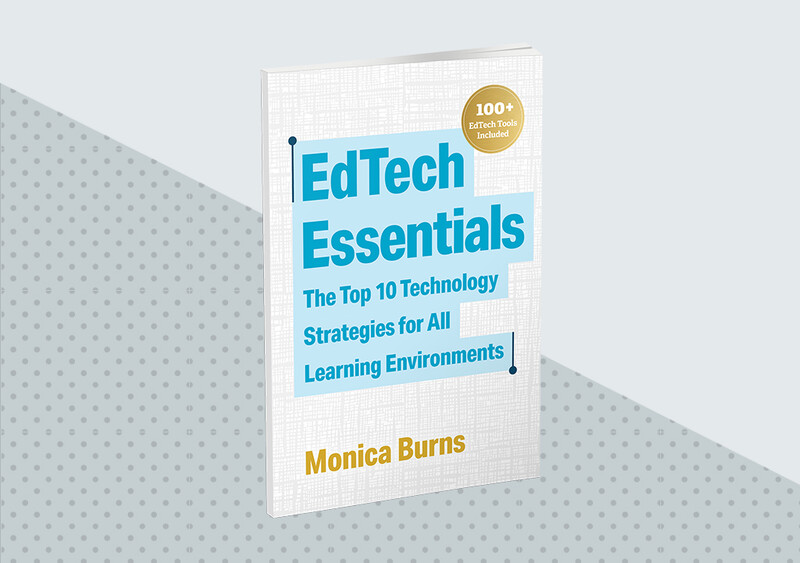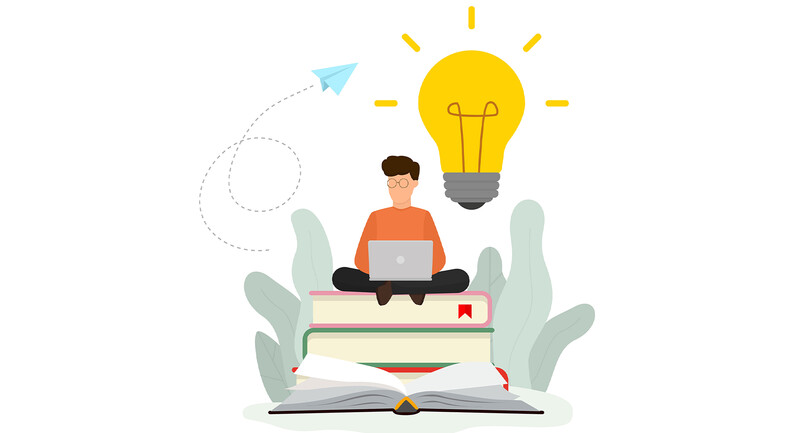Reading response activities are designed to foster intentional reflection on an experience with a text. With this type of reading assignment, students read with a purpose in mind—such as exploring setting or tone in a novel or reading to gather information from evidence within a text. But students also respond to reading in many different ways, whether it’s 1st graders responding to questions about characters in a read aloud or 9th graders sharing their thoughts on current events.
Since reading responses can on take many forms, teachers may want to try adding a digital spin to boost engagement and create more authentic tasks. Students working with technology have access to tools that allow them to create dynamic products of learning, share in authentic ways, and use digital features like voice and audio recordings.
As a classroom technology expert, I’ve compiled a few digitally focused activities to keep expectations high for reading responses. While your prompt or questions might remain the same as reading responses used in the past, this simple tech-refresh could transform the way students share their learning.
1. Create a Collage
Designing a visual representation of an idea is an excellent way for students to reflect on a reading experience. For example, many teachers have young students read a picture book as a class and sort through pictures or magazine clippings related to the setting, character, or another aspect of the text to paste on a piece of paper. Instead of simply posting a collage on a bulletin board to display, students can snap a picture with a tool like Seesaw (a platform you can access for free and use as whole class or with a small group of students) and record themselves talking about the images they've chosen. With Seesaw, your students can also share their narration video as a QR code. Attaching this QR code to a bulletin board is a creative way to make an interactive display.
For a different spin on the same idea, you could ask students to create a collage in Adobe Creative Cloud Express for Education (formerly known as Adobe Spark). They can start collaging by tapping on the + sign, after opening the app, and choosing the collage option. If students want to make a collage that represents a character from their book, they can type keywords to search for pictures to add. For example, they might search for images of things the character likes to do or the hopes and dreams they’ve expressed throughout the book. This collage could look like something the character would post on their favorite social media platform.
2. Try Microblogging
In my book, EdTech Essentials (ASCD, 2021), I dedicate one chapter to student creations and another chapter to identifying an authentic audience for students. Microblogging is a powerful way to transform a traditional reading response into an engaging interactive experience. Even if you haven’t been acquainted with microblogging as a term, I’m pretty sure you’ve seen it in action. Merriam-Webster defines microblogging (noun) as “blogging done with severe space or size constraints typically by posting frequent brief messages about personal activities.” So, posting in short form in social spaces like Instagram or Twitter counts as microblogging.
This type of activity is great for when you want students to respond to a prompt when reading informational text. For example, you might have students make a series of “posts” in response to what they’ve read in a current events article. Or ask students to read an article from Newsela and share a summary or update as a social media-style post.
For a piece of fiction, you could ask students to take on the role of a character and create posts from that character’s perspective. You might encourage students to think about two or three memorable moments from a book they read independently or as a class to create a series of posts chronicling what has happened to a character over a period of time. The type of prompt you share with students should align to your particular instructional goals.
To mimic a social media post, you can create a template with an example (or use the example shared here) in your favorite slide-based presentation tool. For example, in Google Slides, I change the slide size using the page setup option to make a rectangle. Then I add a gray box at the top for students to drop a picture and a text box for their response. With this type of activity, students can mirror the content they might already be consuming in social spaces and practice creating content similar to what they see on this popular platform. It provides an opportunity for students to explore content creation through their reading responses—and a potential pathway to discuss digital citizenship goals, too.
Microblogging is a powerful way to transform a traditional reading response into an engaging interactive experience.
Monica Burns
3. Use Audio, Video, and Animation
The third way to transform reading response is to use audio and video. You could have students add audio or create a video that goes along with a collage or microblogging like the Seesaw example I shared above. Or you might choose a tool that provides multiple ways for students to respond.
I recently worked with a group of elementary school students where we explored the articles in PebbleGo, which provides engaging reading materials for children. Students could choose between a few options within PebbleGo’s platform to create their reading response, including video, audio, text, and animated stickers. Book Creator also gives students options for adding different media types to the page in the ebook they create with this popular tool, including a voice-to-text option that will take their audio and turn it into sentences. And when it comes to video, Flipgrid (a free tool for students and teachers) is the perfect way to have students jump on camera (or cover their face with an emoji or filter) and talk about their reading experiences.
What’s Next
These reading response activities may be helpful for you to build into your regular reading routine as a way of heightening engagement and building both literacy and digital-communication skills. Add one of these to your rotation if you want to give students more options on ways to respond (audio and video), create authentic reading responses (microblogging), or infuse creativity (collages) into your reading classroom.
And if you’re looking to dive into more ideas, download this free study guide for EdTech Essentials.
EdTech Essentials
In a world awash in technology, what edtech skills and strategies should educators focus on to ensure they are making the best use of online spaces for classroom learning?









